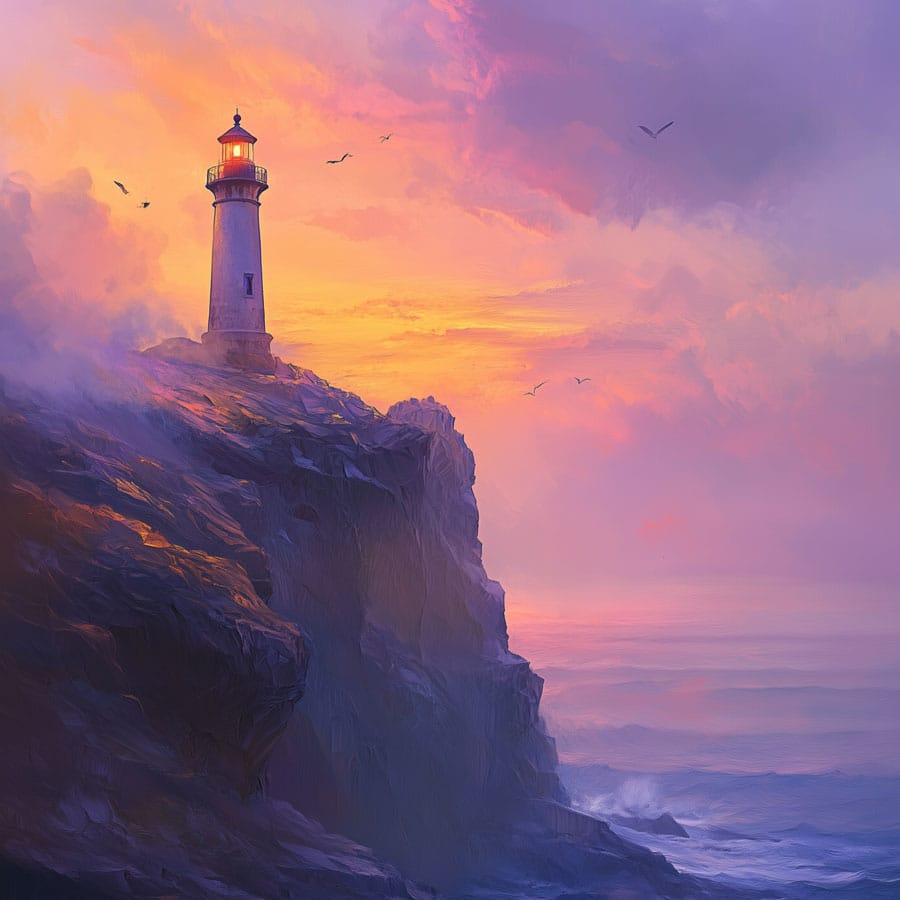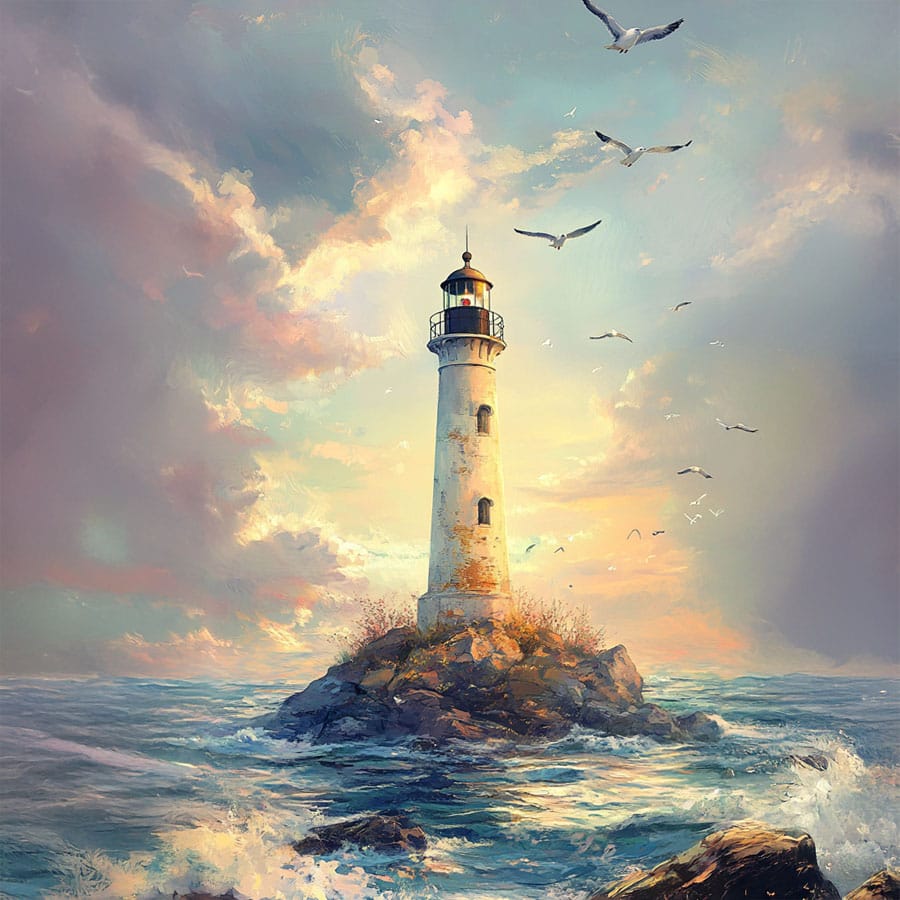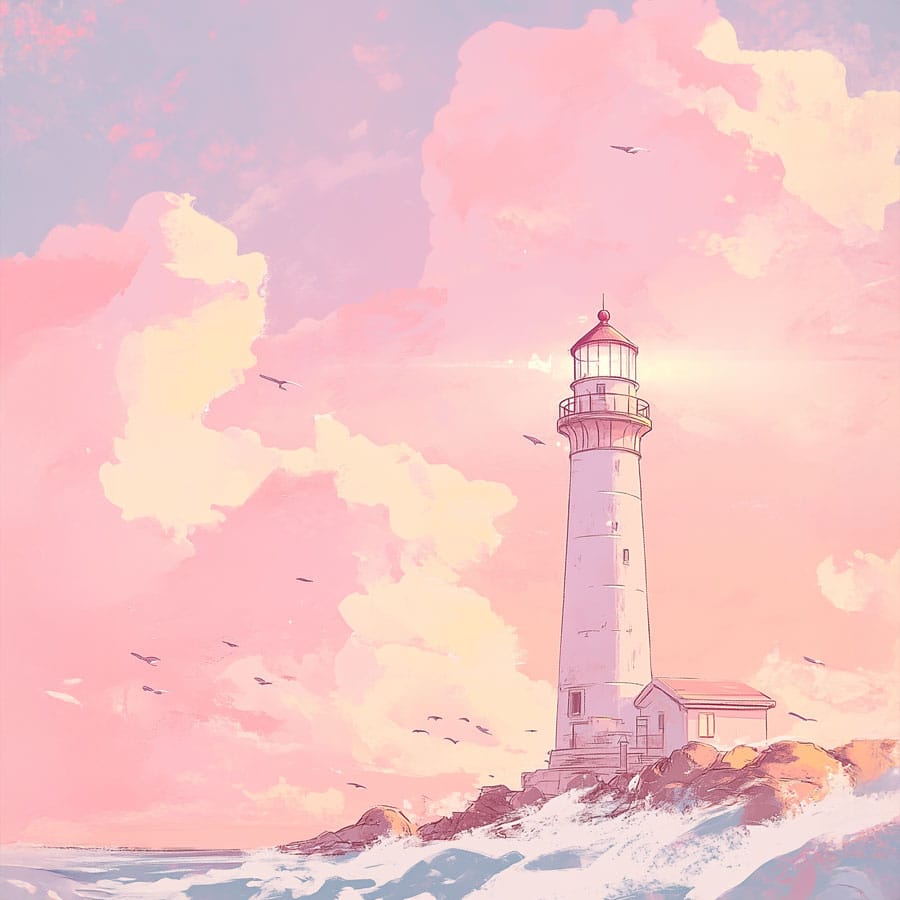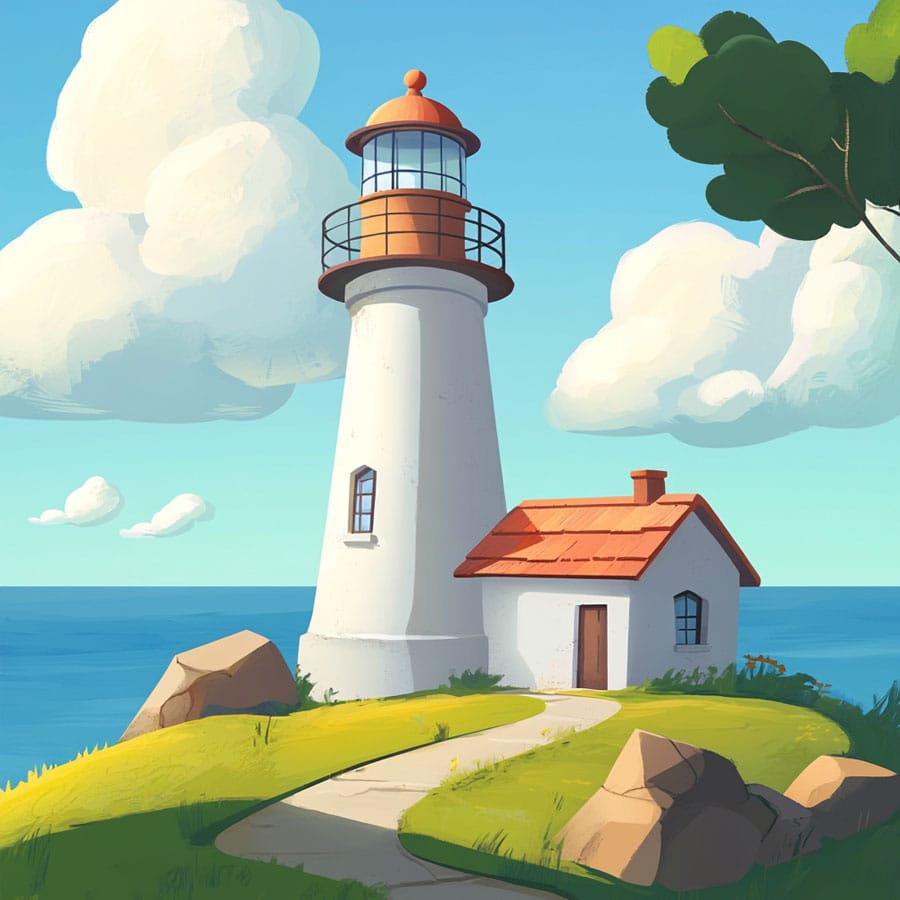Ideas and Tips for Coloring the Lighthouse
To color this lighthouse, you can start by defining a time of day: sunrise, sunset, or night. If you choose a warm sunset sky, blend orange, pink, and lilac tones into the clouds, keeping the horizon lighter and the sky more intense at the top. If you prefer a daytime setting, use soft blues and whites, adding touches of light to the upper parts of the clouds. The lighthouse can have a white or cream base with grayish shadows on one side. Add subtle highlights with lighter pencils or blend using cotton swabs.
The roof of the lighthouse and its metallic details will look good in muted reds, burgundy, or even sea greens. The houses can be painted in earthy or reddish tones to stand out against the vegetation. Rocks work well in cool grays with brown touches, and you can add mossy accents using greens. The water reflects the sky, so adapt its colors to match your chosen scene, using horizontal strokes to suggest movement. Don’t forget to work on the shadows: think about where the light is coming from and darken the opposite side of each object.
Inspiration
Lighthouses have existed for thousands of years. The most famous was the Lighthouse of Alexandria, one of the Seven Wonders of the Ancient World. Besides guiding ships, lighthouses often inspire stories of solitude, bravery, and mystery. Some have caretakers who lived there for years, surrounded by wind, water, and stars. In many places, lighthouses are symbols of hope because they remain steadfast even during storms.























